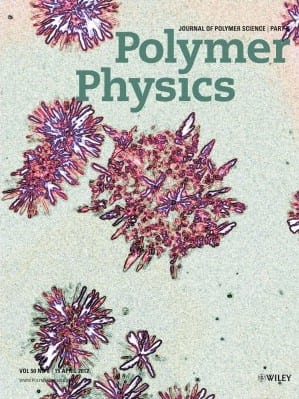Latest editor’s choice papers from the Journal of Polymer Science: Polymer Physics – available to download for free. Click on for the latest news in alkaline fuel cell membranes, roll-to-roll printed devices, polymers for electronics, and biomaterials, and go to www.polymerphysics.org to submit your paper for rapid review and publication with a broad, international audience for your work.
- “Anion exchange membranes derived from nafion precursor for the alkaline fuel cell”, by Yossef Elabd and colleagues
Alkaline fuel cells (AFCs) produce higher power densities at low temperatures compared to their proton counterparts, and can make use of cheaper catalysts. Elabd and colleagues synthesize anion exchange membranes (AEMs) for AFCs with high thermal stability. Crucially, unlike many other AEMs, the hydroxide conductivity is insensitive to drying and rehydrating the membrane.
- “Manufacture and demonstration of organic photovoltaic-powered electrochromic displays using roll coating methods and printable electrolytes”, by John Reynolds, Frederik Krebs and colleagues
Reynolds, Krebs and colleagues prepare electrochromic devices on flexible substrates using spray coating and slot-die coating methods. Excitingly, they demonstrate switching of the devices between bleached and colored state using printed organic photovoltaic devices as the power source.
- “On the formation mechanism for electrically generated exciplexes in a carbazole–pyridine copolymer”, by Anna Köhler, David Beljonne and colleagues
Kohler, Beljonne and colleagues investigate exciplexes in carbazole-containing polymers, which are commonly used as hole-transporting host materials in organic electronics. The discrepancy between behavior shown during electrical and optical excitation is explained by the fact that the preferred precursor to the exciplex is a charged complex that only forms under device operation.
- “Fabrication of 3D electrospun structures from poly(lactide-co-glycolide acid)–nano-hydroxyapatite composites”, by Hani Naguib and colleagues
Naguib and colleagues use layers of electrospun meshes to make 3D composite scaffolds. The stacking and sintering method using pressurized gas produced scaffolds with open porosity of up to 70% and modulus of ∼20 MPa, and improved on the existing electrospinning technology by overcoming the challenges of depositing a thick, 3D structure.

















